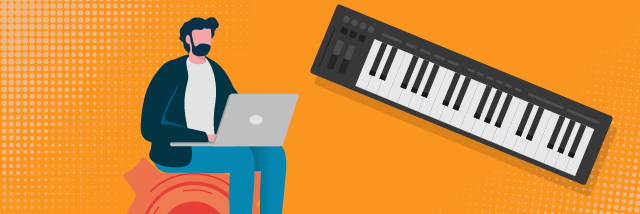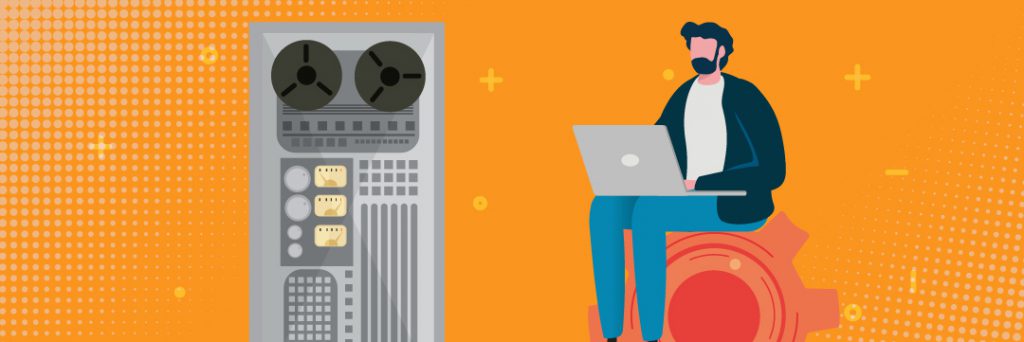How is it possible for music to exist in 8 dimensions? Even the visual dimensions go up to 3D! In a while, it will be easy to understand what 8D technology means. Let’s learn how to make 8d audio that gives an out-of-this-world experience.
The idea of 8D is anchored on the entertainment theory: the more dimensions, the more the fun. 8D technology is, therefore, an attempt to offer a new listening experience beyond the left and right speakers we already know. For instance, if you love movies, you’ll admit that 3D films take you to a new world. Moreover, if you are into gaming, you would want to play in 4k, the highest graphics available for consumers. Since we have had enough of 2D music through the right or left speaker, it is time to take it a notch higher with the 8D audio.
Have you ever heard of 4D-7D? Of course not. Developers of this technology did not want to mix up visual and audio dimensions. Thus, the existence of 8D does not signal precursors like 4D, 5D, and 6D. There is a 7D, though. Instead, 8D is an attempt to signify a new way of producing and listening to music.
Let’s now understand 8D audio better, shall we?
But if you prefer to watch a video instead, click here:
This post was updated on March 2021
What is 8D audio?
Before looking at how to make 8d audio, it helps to understand what this technology means. As discussed above, 8d has no much relation with the 2D and 3D technology that exists in the visual world. Even though it is relatively new, several producers and audio files have already used the technology and are reaping big. Just look into spatial audio and understand what we are talking about. So, what is 8D technology?
8D audio technology taps into the power of the right and left speakers to give you an audio experience like you would get during a live performance. It is an effect added during the production or conversion process, providing the listener with a swirling feeling. Hence, the effect transports you to another world, time, and space. In short, it is an experience beyond sending an audio file to the right or left channel.
To understand the technology better, you must know how sound works on the right and left speakers. The producer sends a particular voice to one speaker such that if the speaker or earphone malfunctions, the audio file will be incomplete. While such an approach helps to balance the delivery of the audio, it is static and does not contribute to getting you immersed in the music.
Nevertheless, the 8D effect smoothly switches the channel from left to right, simulating the feeling of a 3D circle. When listening to it, you will feel as though music is coming from 3600, leaving you absorbed in the audio. Furthermore, the addition of the reverb effect makes you feel like you are following a live concert.

The 8D Audio Converter
An 8D audio will pick you from your feet to feel as though you are floating. It is similar to walking through a street where voices are coming from all directions. The impression created by the 8D effect is of music lifting you and coming from all directions, leaving the listener emotional. In other words, this technology is useful in creating a closer connection between listeners and the action happening on the screen. The activity can be in music, movies or games
Music consumers are now beginning to appreciate 8D technology or effect. However, the technology has been in nature for a while. If you have paid attention to the opening of Echoes by Pink Floyd or been keen while sitting through the surround sound test function when using a home cinema, you must have felt the difference. Though it is considered a futuristic technology, it is already in use only that it has not received the prominence you would expect.
The development of 8D technology comes from years of research by sound engineers on the directional nature of sound sources. Both the engineers and producers working in the industry generated a map indicating how sound relates to the brain after getting to the ears. After successful audio mapping, they have managed to develop the 8D audio effect and successfully use it in different sound situations.
How to Make 8D Audio that Works?
Let’s begin by understanding something called binaural recording. It is a technique where two microphones are used during recording to generate a 3D sound effect. The result is that a listener feels as though he is in the same room with the singer and not listening to sound coming from the right and left speaker.
How then does the binaural recording usher in the 8D audio effect? The sound mapping by engineers and producers, as well as the 3D effect generated from the use of two recording microphones. The microphones help to place different sound-source-channels in space relative to the human head, and not just the 2D right and left ear. Moreover, sound engineers have gone past the manual recording and placement of microphones in studios. They are now creating the effect post-production.
It is worth noting that to create 8D audio, you will have to record your music like an ordinary studio. Then, the producers will manipulate the most stereo parts of your audio files by moving them within a 3600 platform. Ultimately, the manipulation and movement create a futuristic illusion of movement.
It is worth noting that 8 in 8D audio language represents direction more than dimensions. In engineering or studio language, it is referred to as spatial or 3D sound. To experience this effect, you’ll need a 7.1 system or one that is Dolby Atmos supported.
Experiencing The 8D Effect In Audio
As discussed above, 8D music gets you immersed in a sensational audio feeling. Such an aurora experience cannot be generated by ordinary speakers that are designed for the left and right speaker principle.
If anyone has sent you a link on YouTube or an audio file to listen to, the instructions are usually to ‘use both headphones or earphones.’ The enclosed speakers are meant to create a circuit or dome environment where the sound reception is not biased. It can even complete with the 3600 effects.
Why is 8D Audio Gaining so Much Traction?
8D is getting huge because there is a psychological effect coming out of its use. To put it into perspective, let’s understand this first, shall we?
The musicians want listeners to focus on the audio entirely while feeling every chord, word, and vocal rendition. Hence, the 8D effect is comparable to feeling high on drugs; only this time, it is on music. Moreover, if anyone has ever talked to you about teleportation, this is the best definition of the effect.
Gamers are also looking to reap from the 8D effect action too. As you might know, video gaming requires total concentration: each movement usually elicits a sound. You’ll find characters moving through tunnels, warehouses, streets, and even in stadiums where the sound comes from all directions. In other words, the 8D effect must capture the imagination of the gamers, leaving them tied to the game.
The 8D audio converter effect is also in use in VR content. The VR sphere or dome existence is viewed as the visual version of 8D. Additionally, a combination of 3D visual and sound effects is what makes VR ever more fascinating.
Whether you are listening to music or playing a game, the 8D effect is supposed to trigger psychological and emotional reactions. Ordinary music will feel different from such an addition. The 8D effect will take you to another level, making you appreciate the music, film, or game better, compared to your usual mode of consumption.
How To Create 8D Audios
Since you now understand how 8D technology works behind the scenes, let’s see how an artist or producer can achieve this effect.
Like all other technologies, 8D is an advancement of a predecessor. It means that some elements will resemble what you already know.
Here is a list of how to make 8D audio:
- Record a monolithic audio track– the artist follows the traditional rite of recording songs. Then, the producer will use an ordinary studio and microphone, ending up with the regular production.
- After, an editor mixes the tracks following the usual procedures, resulting in the left and right soundtracks.
- Later, an 8D audio editor then positions the tracks on the map using special software. The soundtracks are split by assigning them different speeds so that they can fit in particular positions on the sound map. The Dolby Atmos has added a new dimension of height, enabling the resultant tracks to produce a better effect.
Nevertheless, an 8D audio track is packaged in the same way of transmission as other ordinary music. It can be shared using a memory stick, on YouTube, played on screen, and such other consumption channels. However, feeling the difference requires you to play via headphones, earphones, or music system that supports this 8D technology.

Where Can You Find 8D music?
8D is expected to be the next big thing in the audio world. YouTube is already in the process of taking it to another level by highlighting music that has used this technology.
Some of the notable tracks that have used 8D technology include:
- AviVA released in 2019 in the album Blackout
- Juice Wrld released Lucid Dreams in 2018 using 8D technology. This song was nominated for MTV Video Music Awards in the Best Song of the Summer category. It also featured in the Billboard Music Awards and Top 100 Song in the same awards. Moreover, it also earned a nomination for Top Rap Song in the Billboard Music Awards.
A Billie Eilish remix created by an 8D audio converter is also making waves on the internet. Reviewers indicate that they feel the music playing from all round instead of just the headphones. Some describe the feeling as listening to the music with your brain and not your ears.
Let’s now discuss the elephant in the room. Is 8D music dangerous?
As mentioned above, such music will give you a high. Nevertheless, the feeling has caused some people to raise a concern about the dizzying effects. While some people appreciate this high feeling, it may leave one wobbly and lost in another world. However, if it is similar to being in an actual performance theater, why should it raise the alarm? More research to ascertain this claim.
Final Verdict
After listening to several 8D audio tracks, there is no doubt that this is a technological storm waiting to engulf the entertainment industry. As more producers and listeners embrace the technology, the world will fine-tune it for use in diverse situations.
Create 8D audio with the pros at Bunny Studio and start reaping its benefits now.










